Anyone can argue that building an e-commerce business from scratch is easier than ever.
Thanks to the abundance of self-service, cloud-based platforms that help you take on anything from web design to CRM, anyone with an internet connection can be an e-commerce entrepreneur.
But with countless aspiring individuals setting up virtual shops, breaking through the noise and establishing your brand will require more than just a loaded toolbelt.
You also need to piece together a solid e-commerce marketing strategy that will allow you to reach your target audience and convert them into paying customers.
In this post, we put together a simple checklist that will help you do just that.
Let’s dive right in.
1. Content Marketing
It may sound like a broken record, but in the world of digital marketing, content is king.
You don’t just parade your homepage around and expect potential customers to come lining up.
Remember, even if you manage to pull in dozens of leads through paid advertising, chances are most of them will abandon your website without buying anything.
Statistics show that 92 percent of online consumers visit online stores for research and product comparison purposes. If they can’t find the content they need from your website, or if they come across incomplete or inaccurate information, they’ll leave with a sour taste in their mouths.
On the other hand, providing them with valuable content can help you earn their trust, build buyer confidence, and convince them to return in the future. You just need to look for content ideas that align with their pain points and do keyword research for SEO, PPC, or both.
To dig up content ideas from the web, a reliable strategy is to look for posts on Q&A sites like Quora. All you must do is enter any relevant keyword into the search bar and wait for the suggestions to pop up.
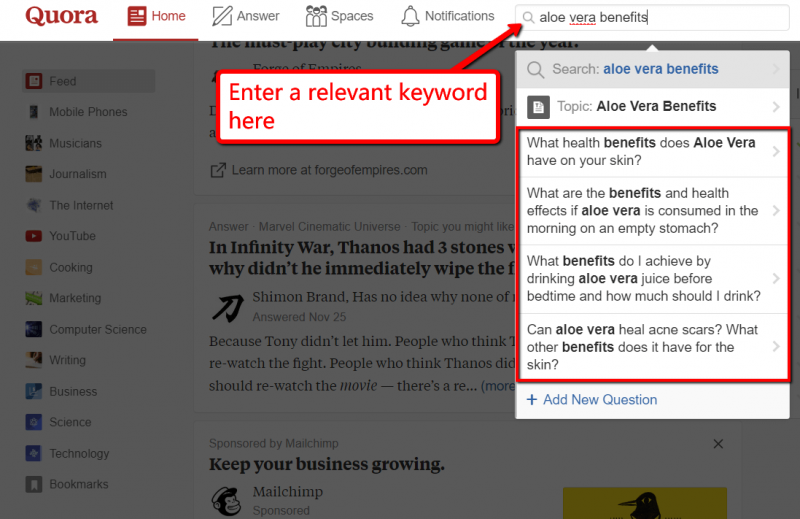
Once you have a lineup of useful content topic ideas, the next step is to look for long-tail keyword opportunities to help them rank highly in search engine results.
A tool like Ubersuggest should get the job done within minutes — simply enter a seed keyword and wait for the long-tail keyword variations to pile in.
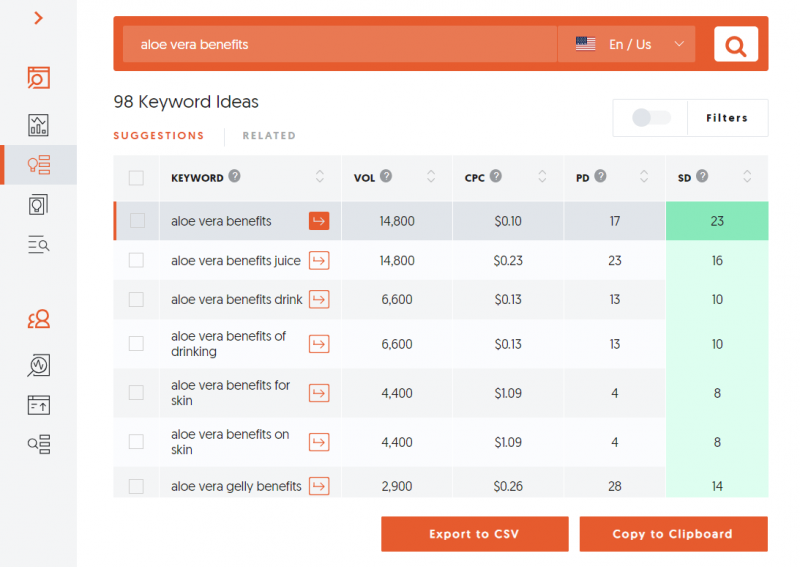
2. Special Offers
It may take some time for you to amass a content library that generates a steady stream of traffic for your online store. In the meantime, you shouldn’t be afraid to experiment with special offers to spice up the experience of your existing visitors.
By now, there could be thousands of sales promotion examples out there to borrow inspiration from. But for your convenience, here’s a short list of sales offer ideas that are easy to plan.
- Holiday Sales
Black Fridays, Cyber Mondays — there are plenty of opportunities to appease hungry shoppers throughout the year. Just be sure to maximize your sales by promoting popular items and communicating your offers ahead of time.
- Signup Bonuses
Rather than shoving a product down a customer’s throat, it’s sometimes better to just present them with a newsletter subscription. You can stimulate conversions by offering signup bonuses, such as discounts, freebies, and free credits.
- Timed Offers
If you do manage to turn visitors into email subscribers, make sure you use automation to broadcast offers during special occasions, such as birthdays and membership anniversaries. You can make any of these happen with an email marketing platform, which leads us to the next point in this checklist.
3. Email Marketing
Speaking of email marketing, small e-commerce businesses don’t have to spend a single dollar for simple campaigns.
MailChimp, for example, has everything you need to design a compelling lead generation and nurturing experience. It features a drag-and-drop landing page builder, opt-in form creator, and newsletter editor with truckloads of templates and themes to choose from.
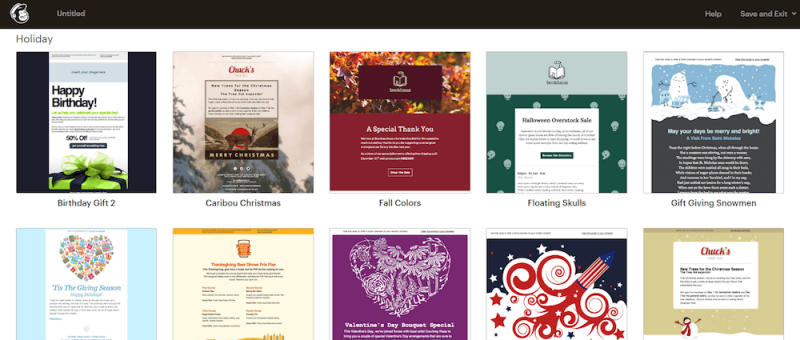
What makes MailChimp great, especially for a free platform, is the built-in email marketing automation workflows.
For example, by connecting your e-commerce platform, you can schedule automated welcome emails, cart abandonment emails, product review requests, and so on without writing a single line of code.
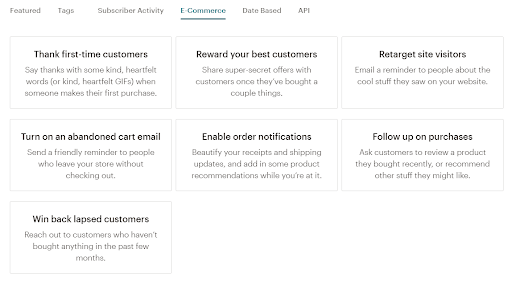
However, despite the numerous templates that can jumpstart your email design, MailChimp won’t concoct killer emails on your behalf.
For that, here are a few guidelines you ought to remember when writing marketing emails for your customers:
- Use a Compelling Subject Line
As the first thing your customers see when receiving your email, the subject line is something you don’t want to mess up. The things to remember are to keep it short, address the recipient by their first name, and use the email address of a real person to make it appear fewer sales.
- Write in a Conversational Tone
Using a conversational, laid-back voice as opposed to a professional tone is a great way to make customers feel more comfortable with your brand. Just be sure to get straight to the point and avoid relying too much on colloquial words.
- Insert a Custom Signature
To improve your email’s authority as well as direct customers to more useful resources, you can use an email signature maker to end your message in an impactful way.
4. Customer Reviews
Convincing leads that you’re worth the investment is no easy task.
More often than not, customers would go great lengths to obtain validation before they commit to a purchase decision. And if there’s one thing these people trust on the internet, it’s the product review of a previous, verified customer.
A survey reveals that 85 percent of online consumers trust reviews as if they were written by someone they personally know.
The good news is, most e-commerce platforms have natively supported apps that make it easy for customers to leave their reviews and ratings. Shopify, for example, features the aptly-named Product Reviews app that will let you utilize the features you need in a snap.
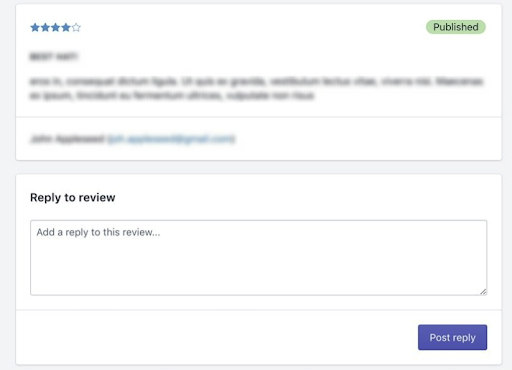
5. Ongoing Testing
Finally, building a successful online store overnight is impossible even for veteran e-commerce entrepreneurs.
It doesn’t matter if your e-commerce business had a roaring start or recently went viral on social media — you still need to implement ongoing testing if you want to unlock the maximum conversion potential of your online store.
As an established e-commerce business, a cost-effective approach is to invest in software testing services for web applications. Not only will a team of professionals deliver results faster, but they can also address important development issues, such as security, performance, and browser compatibility.
Alternatively, you can go for a heatmap tool with A/B or split testing capabilities such as Hotjar. Put simply, heatmaps are visual representations of a website’s hot and cold spots — enabling you to identify conversion elements that work without the number-crunching.

Conclusion
So, you’ve made it to the end of this post.
What are you waiting for? The strategies above won’t do you any good if you’re not willing to turn them into action.
If you have concerns, suggestions, or feedback you’d like to share, don’t hesitate to use the comments section below. Also, we’re looking forward to your updates if you do have the courage to utilize the strategies outlined in this checklist. Good luck!




